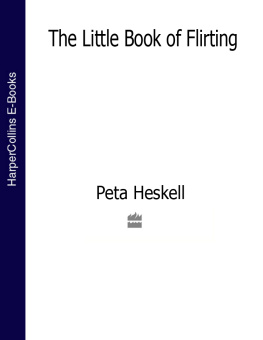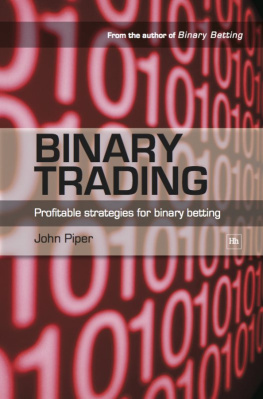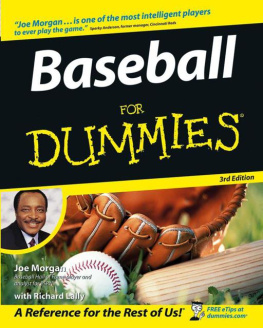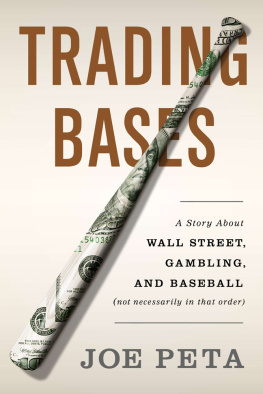
ACKNOWLEDGMENTS
After having gotten to the playoffs by going 218 down the stretch to overcome a ten-game deficit in the Wild Card standings, after winning playoff series against the two teams in the National League with the best records during the regular season, and then after twice overcoming a two-run deficit in its last at bat during Game 6 of the World Series, the St. Louis Cardinals won Game 7 of the 2011 World Series on a Friday night in late October. That same week, I learned that the rights to this book had been purchased by a major U.S. publisher.
There was no doubt in my mind which was the more improbable event.
Four months earlier, without advanced notice, I dropped two sample chapters onto the desk of my wife, a former magazine editor. Realizing that I was trying to write something far more ambitious than the family Christmas letter I annually needed help constructing, she recommended that I get professional help from an expert in the field of nonfiction writing. She suggested I take an online course at Media Bistro. It was a brilliant suggestion because the instructor of my nonfiction book writing course, Leslie Sharpe, a professor of nonfiction writing at Columbia University, not only tirelessly aided me as the concept for this book took shape but she also happened to be a rabid baseball fan with roots dating back to the Shibe Parkera Phillies. She helped me get over my embarrassment of being a baseball nerd and encouraged me instead to let the reader see my passion for both the sport and the numbers behind it.
I also took a nonfiction book proposal course from Mollie Glick, where I not only learned how to properly construct and target a book proposal, but where I also learned an enormous amount about the publishing industry. More than one industry professional told me my proposal did not look like the work of a first-time author. For that I have Mollie to thank.
By the time Labor Day 2011 arrived I had completed both my courses, had a finished book proposal, and thanks to eight months of physical therapy, walked with just a mild limp. I figured it was time to get back into the workplace and was about to start looking for a job in finance when another improbable twist of fate took place.
During a weekend get-together in Las Vegas with two friends from New York, I disclosed that I had an idea for a book and showed them the first chapter from the proposal. When asked what my next step was, I told them I needed to find a literary agent. Deric Senne then floored me when he said, My former next-door neighbor is an agent. Do you want me to show her the proposal?
Deric has been a good friend of mine for fifteen years; he would help me in any situation as he is a tremendously loyal friend. That said, there is no one in New York City I would have suspected less of knowing a literary agent. Not to put too fine a point on it but he has an arcade in his penthouse apartment. It turns out Deric not only knew an agent, his former neighbor was Laura Dail, who runs the literary agency that bears her name. Nothing could have been more fortuitous, for Laura instantly championed my proposal. During our first phone call when I told her my plans for the book were to try to market it to a niche publisher of arcane baseball material, she instructed me to aim much higher. Laura saw the potential for a mass market book and she has expertly guided me every step of the way to publication. I cant thank her enough for the chance she took on a complete novice.
From the first time Stephen Morrow interviewed me on the phone and told me Dutton had an interest in the manuscript, I hoped Dutton would win the rights to the book, hed be my editor, and Id become a Penguin Group author. Over the next year, I never questioned that initial instinct as Stephen could not have been a better editor for a first-time author. Every suggestion he made resulted in a better book, and most assuredly made me look like a better writer.
I knew Jared Dillian and Shilpi Somaya Gowda as a former coworker and classmate respectively, which served as yet another fortuitous development because each of them had recently published their first books. They were both very helpful in advising me what to look for in an agent, a publisher, and an editor.
As if my wife, Caitlin Sims, doesnt bring enough to the table that is our marriage, she also has provided me with the greatest in-laws any spouse could ever hope to have. Not only have Crystal and Dick Sims never questioned why their son-in-law hasnt had a job in two years, watches endless baseball, and spends far too much time in Las Vegas, they facilitated my completion of the book by allowing me to use their house in the mountains as a two-week retreat when my submission deadline approached.
Caitlin and my brother, Doug Peta, used their professional editing and writing skills, respectively, to polish many versions of the manuscript before it ever made it to the publisher. They improved so many areas of my writing through corrections and suggestions that I cringe at what the reception for the manuscript would have been at Dutton if Caitlin and Doug hadnt protected me from myself.
Dave Houser, Scott Shimamoto, and Tim Ranzetta, all longtime friends who Ive bonded with over baseball games, read early versions of this books initial chapters and enthusiastically encouraged me to keep writing. Dave, in particular, had a great ear for tone and helped me find the right voice early in the process.
Before my wife ever saw the first chapters I dropped on her desk, I showed them to my best friend since college, Matt Lugar. Matts review was crucial because as hes told me innumerable times over the years, Im not a baseball guy. If my numbers-heavy passages fell flat with him, I may have lost the nerve to keep writing. I knew his support would be unwavering, but when he told me he went to the standings during the 2011 season to find out how many runs Tampa Bay was scoring, he unwittingly provided me with all the encouragement I needed.
Far too many times during the writing of this book, my daughters, Lily and Calista, had to endure the bewildering, unsolicited reply of Im working when theyd wander into our family room to find me in front of the computer with the television tuned to a baseball game. One of the little joys in my life is when they shout down my root, root, root for the Phillies during a seventh-inning stretch and replace my lyrics with support for their hometown Giants. Along with Caitlin, they provided me with the inspiration to see this project to its completion.
Its important to note that none of my ideas pertaining to building a sabermetric-based model would have been remotely possible without the decades of research and work done by the pioneers in the baseball analytics industrywork that they have largely disseminated into the public domain. Throughout the book, I attempted to name as many individuals as possible responsible for specific areas of research. Broadly, however, there are three writers whose work and writing skills I admire so much I never fail to read every word they publish. Aaron Schatz may write about football, but hes never hesitated to cite the pioneers of baseball research as his inspiration. In turn, his critical reasoning has inspired me to apply some of the principles of his football research back to baseball. Matt Swartz never fails to captivate me with his economics-based logic when writing about baseball, and hes a Phillies fan to boot. Joe Sheehan is, for my money, the best baseball writer in America. Before I ever started writing the first chapters of this book, Joe tweeted a link to an essay I wrote about taking my youngest daughter to her first baseball game. The response to the essay was so positive that it gave me the idea to possibly merge the gambling-related e-mails I was sending to my friends with that essay and use it as the basis for something larger.














